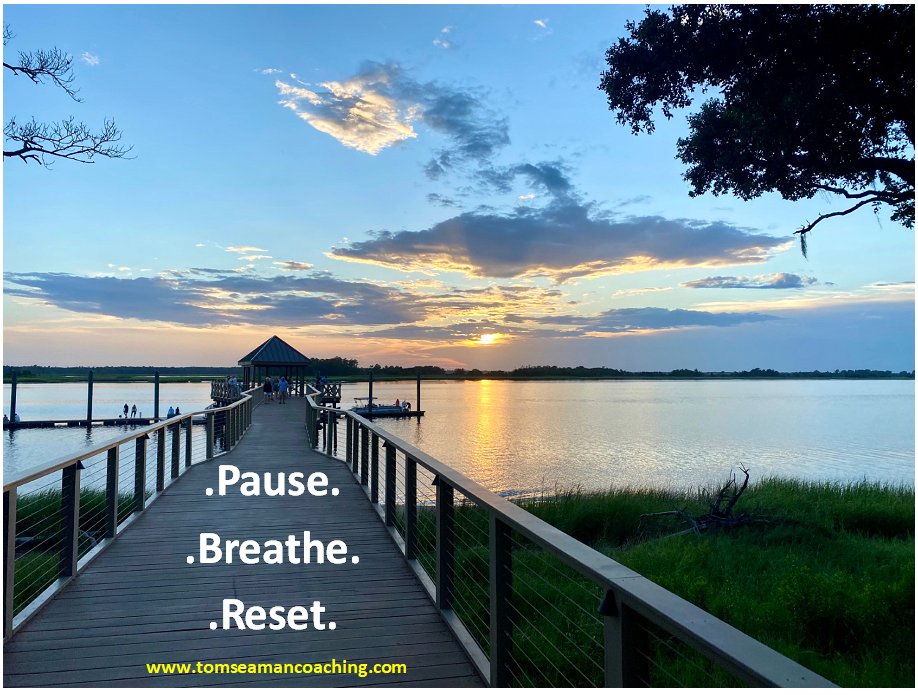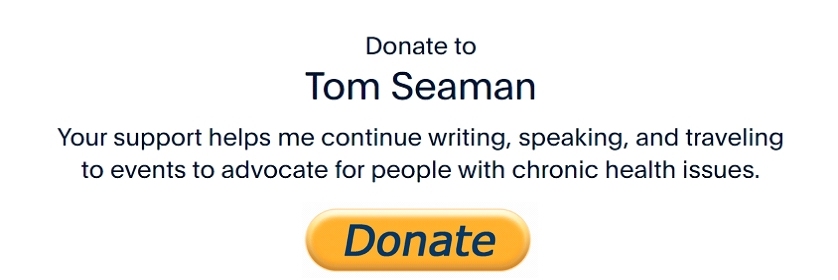A visual tip to slow down and not over do it and hurt yourself more
If you have read my books or seen my blogs or videos, you know that I live with a neurological movement disorder called dystonia that I have had since 2001. It can be a very painful condition and one that is very unpredictable. Each day is different. Some days the pain and other symptoms (muscle contractions/spasms, balance problems, fatigue, etc.) are low and I can do more and some days I need to really pull back and rest by doing a lot of self-care. This is par for the course for many people with this condition, as well as many other chronic conditions too numerous to list. This being the case, I need to set up strategies in my mind for how to deal with the daily challenges and how I listen to my body.

A lot of us have a knack for overdoing it, meaning we push our body beyond the limit it can handle. We then feel worse because we have an increase in symptoms. I have fallen victim to this many times because I can be an impatient go-getter, and I am sure many of you can relate, but I am getting better at it with practice different strategies. The one I want to share with you in this blog is a visual that I hope you find helpful.
I think of the severity of my symptoms as a traffic light. When the light is green that means that I am feeling well enough to do more things. The longer I continue with those activities I might begin feeling more pain or muscle tightness or stiffness or contractions and spasms. This is when the green light turns yellow, a warning to slow down and very shortly to stop.
 The problem many of us run into is that we push beyond this signal and the light then tuns red, meaning we are forced to stop because we let things get so bad by overdoing it. We then suffer the consequences of not listening to the signals our body is giving us. Sometimes we are done for the rest of the day and the next day or even longer.
The problem many of us run into is that we push beyond this signal and the light then tuns red, meaning we are forced to stop because we let things get so bad by overdoing it. We then suffer the consequences of not listening to the signals our body is giving us. Sometimes we are done for the rest of the day and the next day or even longer.
Rather that reach that red light where I am forced to stop and lay down for an extended period of time and do other self-care things (click on my self-care video here), I practice stopping myself when I notice the yellow light; the point where my body is saying, “Hey Tom! What are you doing?? You know I’ve had enough. Please stop now before you hurt me or I will be forced to stop you.” Just like when we are driving, green is go, yellow is the yield, caution, slow down, pay attention, beware notification, and red is stop. It works the same way in our body, but for us, red is the point where we are forced to stop because we went overboard and we pay a painful price. So, don’t stop on red. Stop on yellow.

I’m a very visual person, so having this to think about as it relates to my body is very helpful. I have another one that I like to use that is called Pause. Breathe. Reset. I wrote a blog about this and if you want to check it out you can click here. It talks about how we can slow ourselves down when we feel rushed and anxious so we can more mindfully go about our day.
When we overdo it and we reach the point of “red light,” we are forced to rest. That forced rest is usually much worse than if we stop ourselves before it gets to be so bad that we might be spent for several days when it could have otherwise only been just a couple of hours, or less, or no rest needed at all, if we listened better to our bodies and that internal traffic light.
Many of us are stubborn and want to do more than our body allows. This stubbornness is a great quality, but we need to change the way we apply it. Rather than use your stubbornness to push through the pain, use it to discipline yourself to slow down to prevent more pain.
___________________
 Tom Seaman is a Certified Professional Life Coach in the area of health and wellness, and the author of 2 books: Diagnosis Dystonia: Navigating the Journey and Beyond Pain and Suffering: Adapting to Adversity and Life Challenges. He is also a motivational speaker, chronic pain and dystonia awareness advocate, health blogger, volunteer for the Dystonia Medical Research Foundation (DMRF) as a support group leader, and is a member and volunteer writer for Chronic Illness Bloggers Network, The Mighty, Brain & Life Magazine, and Patient Worthy. To learn more about Tom, get a copy of his books (also on Amazon), or schedule a free life coaching consult, visit www.tomseamancoaching.com. Follow him on Twitter @Dystoniabook1 and Instagram.
Tom Seaman is a Certified Professional Life Coach in the area of health and wellness, and the author of 2 books: Diagnosis Dystonia: Navigating the Journey and Beyond Pain and Suffering: Adapting to Adversity and Life Challenges. He is also a motivational speaker, chronic pain and dystonia awareness advocate, health blogger, volunteer for the Dystonia Medical Research Foundation (DMRF) as a support group leader, and is a member and volunteer writer for Chronic Illness Bloggers Network, The Mighty, Brain & Life Magazine, and Patient Worthy. To learn more about Tom, get a copy of his books (also on Amazon), or schedule a free life coaching consult, visit www.tomseamancoaching.com. Follow him on Twitter @Dystoniabook1 and Instagram.




























I guess it’s a balancing act we have to
do each day, and it can be very, very
frustrating, and sometimes
disheartening, and difficult to accept.
Thank you for bringing up the topic,
because the last thing we want to do is
to make our symptoms worse.
It is a daily practice for sure. Not an easy one by any means, but necessary. I try to turn to gratitude for having to be more balanced and mindful, which helps reduce the frustration about having to do it, because it helps me tune in more to my body which is always a good thing for me.
I had not realized that balance issues could be part of dystonia. It’s a relief to know this. Thank you!
You’re welcome. Balance issues and dystonia are very common
Tom,
Thank You
Really needed to hear your words of wisdom toady. The stop light was such a enlightening tool.
I am really glad to hear this was helpful!
Tom,
Thank You
Really needed to hear your words of wisdom toady.
Georgine
You’re welcome 🙂
Thank you Tom. Ive been confronted with this exact issue recently and your advice is very helpful.
If only it was easier to apply. Haha
I agree. It’s very tough!